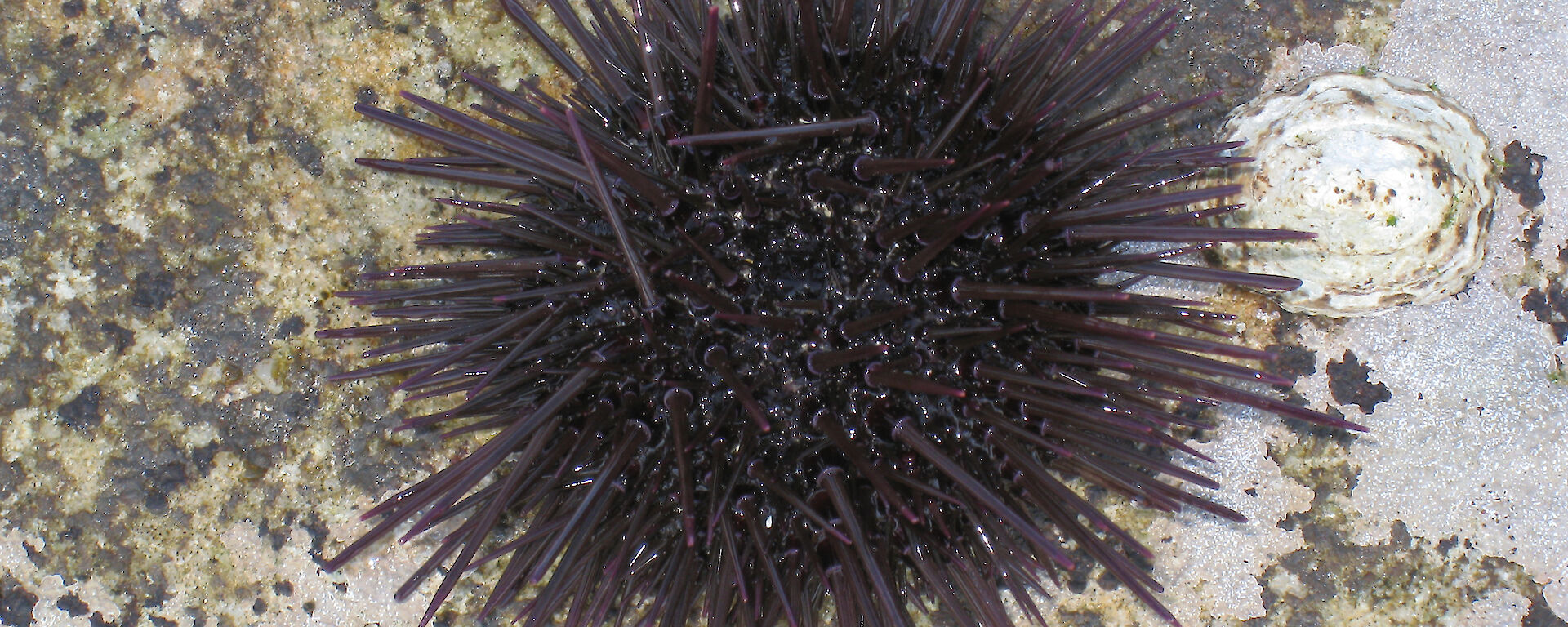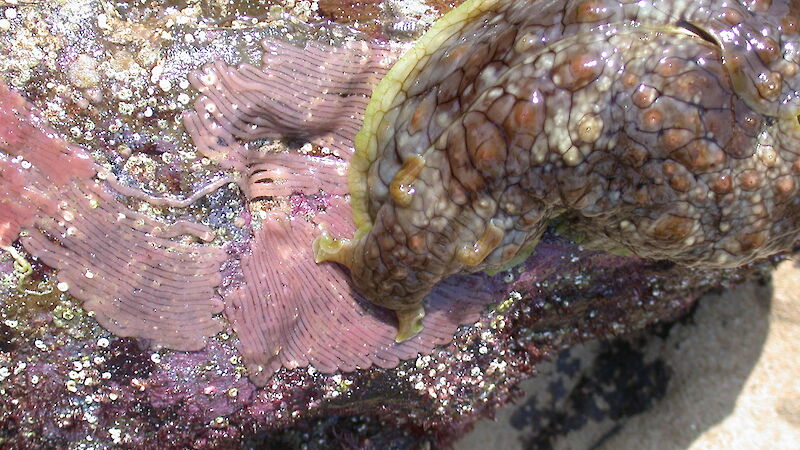Ocean acidification is just one of many stressors marine creatures face in the future. Understanding how the different stressors interact to impact on marine systems is critical to predicting and managing future change.
Global warming and resulting climate changes have received considerable scientific, political and media attention in recent years. There is now a clear scientific consensus that increasing atmospheric carbon dioxide (CO2), due to human activities, is causing the oceans to warm and become more acidic.
Eastern Australia is a climate change hot spot where, due to a disproportionate increase in sea surface temperature, marine life in the region is predicted to be particularly vulnerable to the impacts of climate change and other stressors. In this region sea temperatures have been warming for decades, as a result of changes in circulation and the influence of the East Australian Current, with a 2.3°C sea temperature rise since the 1940s. The CSIRO model predicts a further 2 to 3°C rise as early as 2070 and disproportionate warming in winter. This may prove problematic for marine organisms that spawn in winter, given the potential exposure of vulnerable developmental (larval) stages to temperatures beyond their thermal tolerance threshold.
As well as changes due to global warming, marine organisms are faced with a plethora of other stressors including pollution, fishing pressure, and increased UV exposure due to ozone depletion. These stressors have interactive effects that are difficult to predict, presenting a considerable challenge as we try to foresee changes to marine ecosystems and develop adaptive management strategies in the face of climate change.
Through a series of experiments we are investigating the response of marine biota, whose distributions coincide with the Eastern Australian hotspot, to multiple stressors. These experiments, described below, are in-keeping with near-future climate change scenarios.
Climate change and UV-induced stress on mollusc egg massesFor intertidal molluscs that lay their eggs on hard surfaces along the shore, we looked at the influence of temperature, salinity and UV on embryonic development and the hatching success of larvae.
A comparison of the rates of mortality and development for common rocky shore molluscs, following exposure of their egg masses to three environmental stressors, revealed striking synergistic effects. Uniformly low levels of mortality (less than 10%) were observed for three species on simultaneous exposure to various temperature (18, 21 and 26°C) and salinity (25, 35 and 45 parts per thousand) treatments. However, mortality jumped 5 to 12 times on exposure to full spectrum UV radiation. With added UV exposure, the same temperature and salinity treatments significantly slowed development, extending the exposure of the mollusc embryos to potentially hazardous conditions. These dramatic impacts could not have been predicted from experiments with single stressors and warn that we may well be underestimating the effects of climate change.
Heat stress in sea urchins
To investigate the response of sea urchins to heat stress in winter and summer (in light of predicted temperature change in these seasons), we looked at changes in the animals’ heat shock proteins — a group of proteins which increase when cells are exposed to elevated temperatures or other stress. This in-built protective response is common to all animals.
Two sea urchin species common in temperate Australia — Heliocidaris erythrogramma and H. tuberculata– were used. In summer both species exhibited similar levels of heat shock proteins across all experimental treatments (+2 to 6°C above ambient*) indicating that their protective response to heat stress is adapted to a warming ocean in this season. In winter the heat shock protein response to heat stress (+2 to 6ºC above ambient) in H. erythrogramma was induced, but within a smaller temperature range, and the response of H. tuberculata was limited. This indicates that heat stress in winter may not be tolerated by these urchins.
Influence of temperature and pH on sea urchin fertilisation and early developmentFor marine organisms that release their eggs and sperm into the water column, where the larvae subsequently develop as planktonic organisms, both the main climate change stressors — ocean acidification and increased water temperature — are of concern.
We investigated the interactive effects of these stressors on fertilisation and development of H. erythrogramma in experimental treatments (20 to 26°C, pH 7.8 to 8.2). The degree of fertilisation did not differ across treatments and there was no difference in the level of normal development in any pH treatment. The embryos were also tolerant to decreased pH (more acidic) and increased temperature, except to the most extreme temperature treatments; 24 and 26°C (+4°C and +6°C above ambient). At these elevated temperatures the success of early development was reduced by 20% and 40%, respectively. Within 24 hours most of the embryos reared in the high temperature treatments were dead. Thus at 26°C — a temperature that is predicted to occur in local NSW waters — these urchins may have difficulty reproducing, unless they can adapt to the expected change in thermal regime.
This first study of the interactive effects of temperature and pH on sea urchin development shows that there are negative effects on fertilisation and embryo development at the upper limits of predicted ocean warming.
Our findings emphasise the need for experiments that examine multiple stressors concurrently and indicate that, in the short term, ocean warming is of particular concern. This is certainly true for the marine biota of eastern Australia. Temperature is the most important environmental factor controlling the biogeography, physiology, phenology (timing) and fundamental life history processes in marine populations. Several recent studies show that ocean warming can affect the extension or contraction of an organism’s range, and the timing of biological processes. Although recent climate change research has focussed on ocean acidification and biocalcification, embryos may not be able to develop to the stage during which they make their shell or skeleton in a warming ocean.
*Ambient is approximately 20°C although it varies over summer between 19 and 24°C.
MARIA BYRNE1 and ANDY DAVIS2
1 Anatomy and Histology, Bosch Institute, F13, University of Sydney
2 Institute for Conservation Biology, University of Wollongong



